We put the Samsung Galaxy Z Flip4 through our rigorous DXOMARK Audio test suite to measure its performance both at recording sound using its built-in microphones, and at playing audio back through its speakers.
In this review, we will break down how it fared in a variety of tests and several common use cases.
Overview
Key audio specifications include:
- Two speakers (Top center front, bottom right)
- No Jack audio output
- Dolby Atmos technology
Scoring
Sub-scores and attributes included in the calculations of the global score.
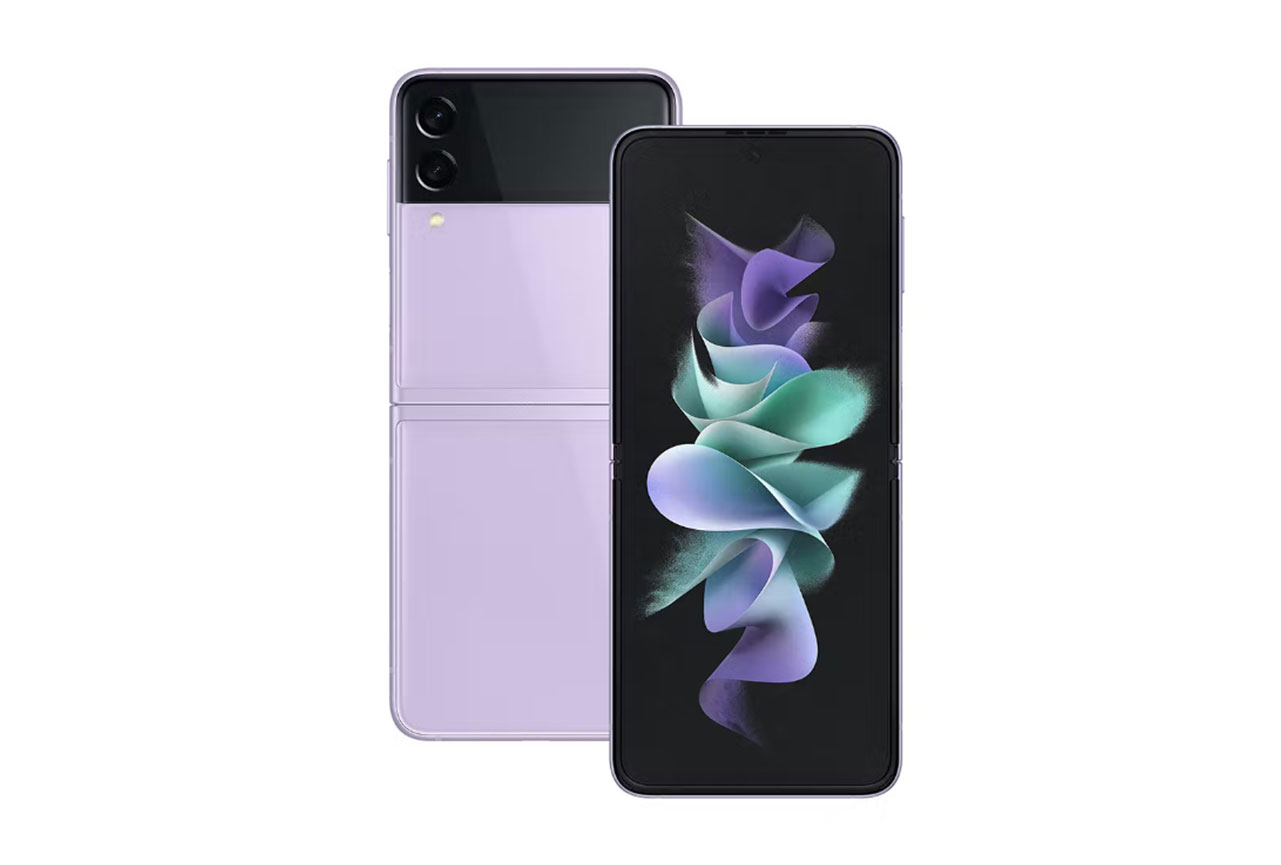
Samsung Galaxy Z Flip4


 70th
70th 47th
47thPlayback
Pros
- Good tonal balance
- Good dynamics
- Nearly free of artifacts
Recording
Pros
- Good timbre in all recordings except concert use case
- Excellent signal-to-noise ratio
- Excellent distance rendition
Cons
- Too much information around 200Hz makes some recordings muddy and unclear
- Underwhelming wind noise reduction
- No audio zoom feature
With a DXOMARK Audio score of 130, the Samsung Galaxy Z Flip4 delivers an overall reliable and consistent audio performance, both in playback and recording, and achieves similar results to many other Samsung Galaxy models. However, it cannot quite keep up with the best in class.
In Playback, it performs on a very similar level across all use cases, delivering good tonal balance and dynamics, without hardly any artifacts. However, our testers were expecting a better spatial performance, given that the device is pretty big when unfolded, and in terms of volume, the Z Flip4 is not quite on the same level as some of its more conventional Samsung Galaxy cousins.
As a recording device, the Z Flip4 does best for front camera and main camera recordings and is less recommendable for office and memo recordings, mainly because it defaults to mono recording when using the corresponding apps. Other than that, recordings made with the Samsung offer good timbre in most use cases, as well as excellent signal-to-noise ratio and distance rendition. On the downside, wind noise reduction is not very effective, and the device lacks an audio zoom feature.
Test summary
About DXOMARK Audio tests: For scoring and analysis in our smartphone audio reviews, DXOMARK engineers perform a variety of objective tests and undertake more than 20 hours of perceptual evaluation under controlled lab conditions.
(For more details about our Playback protocol, click here; for more details about our Recording protocol, click here.)
The following section gathers key elements of our exhaustive tests and analyses performed in DXOMARK laboratories. Detailed performance evaluations under the form of reports are available upon request. Do not hesitate to contact us.
Playback
Samsung Galaxy Z Flip4
163
DXOMARK engineers test playback through the smartphone speakers, whose performance is evaluated in our labs and in real-life conditions, using default apps and settings.
In Playback, the Z Flip4 offers a pleasant timbre, with sonority that is similar to other Galaxy phones, such as the A52 or S22 Ultra. However, the midrange is less consistent, which results in a slightly thinner tonal balance overall. The Samsung Z Flip4 device also does well in the dynamics, with a sharp and precise attack, good bass precision, and decent punch, despite the lack of low-midrange support.
The Flip4’s stereo speakers offer good wideness of the stereo scene, but considering the phone’s fairly large dimensions when unfolded, we expected even better. Distance rendition is overall correct, and depth perception is decent for common types of content. However, localizability could be better, with individual instruments sometimes sounding blurry within the sound scene. Maximum volume is decent and at a similar level as the more conventional Galaxy S22 Ultra. Minimum volume on the other hand, is a little too quiet, meaning some content, such as classical music, can be difficult to consume at this volume setting. As with all devices from Samsung’s Galaxy series, audio artifacts are very well controlled, with only some light distortion and compression at maximum volume. The device is also designed in a way that reduces the potential for accidental covering of the speakers with your hands.
Listen to the tested smartphone’s playback performance in this comparison with some of its competitors:

Timbre
Samsung Galaxy Z Flip4
158
The Timbre score represents how well a phone reproduces sound across the audible tonal range and takes into account bass, midrange, treble, tonal balance, and volume dependency. It is the most important attribute for playback.

Dynamics
Samsung Galaxy Z Flip4
149
The Dynamics score measures the accuracy of changes in the energy level of sound sources, for example how precisely a bass note is reproduced or the impact sound from drums.



Spatial
Samsung Galaxy Z Flip4
162
The sub-attributes for spatial tests include pinpointing a specific sound's location, its positional balance, distance, and wideness.
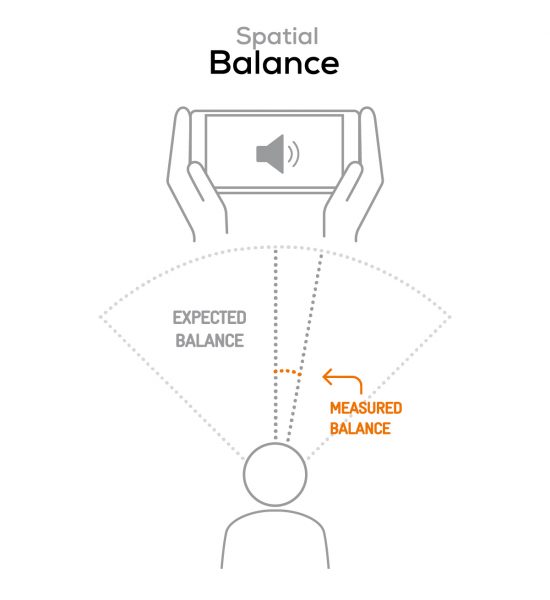
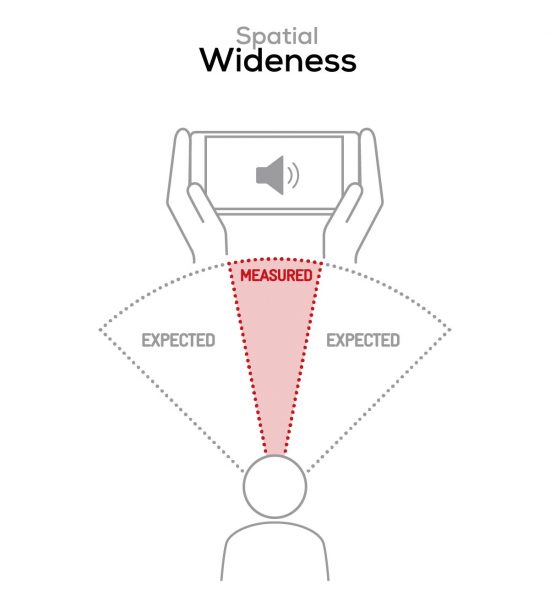

Volume
Samsung Galaxy Z Flip4
162
The Volume score represents the overall loudness of a smartphone and how smoothly volume increases and decreases based on user input.
| Hip-Hop | Classical | |
| Samsung Galaxy Z Flip4 | 73.6 dBA | 68.4 dBA |
| Apple iPhone 14 | 74.8 dBA | 71.9 dBA |
| Samsung Galaxy S22 Ultra (Exynos) | 74.1 dBA | 70.2 dBA |

Artifacts
Samsung Galaxy Z Flip4
157
The Artifacts score measures the extent to which the sound is affected by various types of distortion. The higher the score, the less the disturbances in the sound are noticeable. Distortion can occur because of sound processing in the device and because of the quality of the speakers.


It represents the distortion and noise of the device playing our test signal (0 dB Fs, Sweep Sine in an anechoic box at 40 cm) at the device's maximum volume.
Recording
Samsung Galaxy Z Flip4
160
DXOMARK engineers test recording by evaluating the recorded files on reference audio equipment. Those recordings are done in our labs and in real-life conditions, using default apps and settings.
Overall, the Z Flip4 is better for recording sound than it is for playing back. Recording timbre is good, with an overall satisfying low-midrange and pleasant bass rendition. However, a less present high-midrange contributes to a less clear sonority and somewhat receded high-end extension making treble sound a bit dull.
Dynamics performance is good, with excellent signal-to-noise ratios when recording with the selfie camera and decent values for all other use cases. Envelope rendition is correct across all use cases as well but lacks some accuracy. Attack is decent but could be more precise. The Samsung does well for spatial attributes in Recording, with excellent distance rendition and good stereo wideness when recording with the main camera. However, wideness is reduced when recording in portrait orientation with the front camera, and the recorder app is mono by default.
Recording volume is mostly correct, but in real-life scenarios loudness can drop noticeably if there is strong background noise. This is especially true for front camera recordings and when using the recorder app. The Z Flip4 performed exceptionally well for maximum loudness and is capable of handling loud recordings with only little distortion.
Still, the usual moderate distortion and compression are noticeable in recordings of loud content and the Z Flip4 seems quite sensitive to occlusions of the microphones and finger noises, resulting in cuts, filtering, and fluttery modulations. Background performance is very good, with excellent tonal balance, well-controlled artifacts and only some volume fluctuations.
Here is how the Samsung Galaxy Z Flip4 performs in recording use cases compared to its competitors:

Timbre
Samsung Galaxy Z Flip4
147
The Timbre score represents how well a phone captures sounds across the audible tonal range and takes into account bass, midrange, treble, and tonal balance. It is the most important attribute for recording.

Dynamics
Samsung Galaxy Z Flip4
146
The Dynamics score measures the accuracy of changes in the energy level of sound sources, for example how precisely a voice's plosives (the p's, t's and k's, for example) are reproduced. The score also considers the Signal-to-Noise Ratio (SNR), for example how loud the main voice is compared to the background noise.

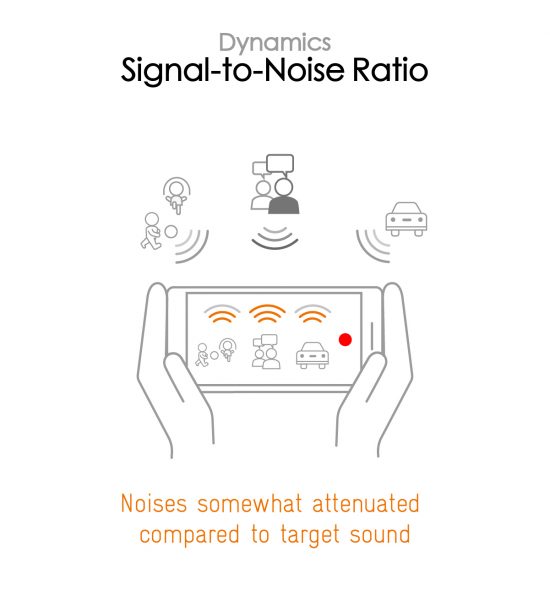

Spatial
Samsung Galaxy Z Flip4
159
The sub-attributes for spatial tests include pinpointing a specific sound's location, its positional balance, distance, and wideness on the recorded audio files.
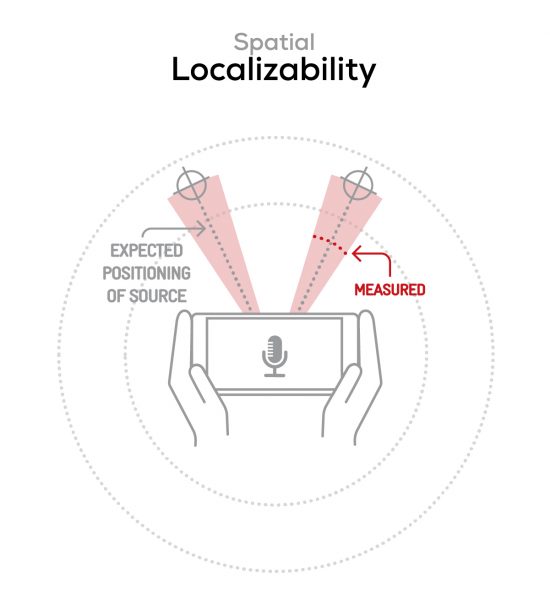
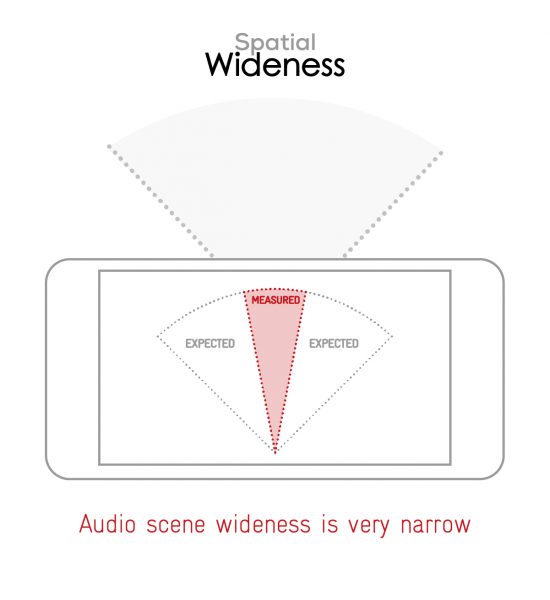

Volume
Samsung Galaxy Z Flip4
170
The Volume score represents how loud audio is normalized on the recorded files and the how the device handles loud environments, such as electronic concerts, when recording.
| Meeting | Life Video | Selfie Video | Memo | |
| Samsung Galaxy Z Flip4 | -25.2 LUFS | -21.5 LUFS | -19.7 LUFS | -21.6 LUFS |
| Apple iPhone 14 | -23.8 LUFS | -22.5 LUFS | -20.5 LUFS | -18.7 LUFS |
| Samsung Galaxy S22 Ultra (Exynos) | -28.8 LUFS | -21.7 LUFS | -21.2 LUFS | -23.9 LUFS |

Artifacts
Samsung Galaxy Z Flip4
145
The Artifacts score measures the extent to which the recorded sounds are affected by various types of distortions. The higher the score, the less the disturbances in the sound are noticeable. Distortions can occur because of sound processing in the device and the quality of the microphones, as well as user handling, such as how the phone is held.
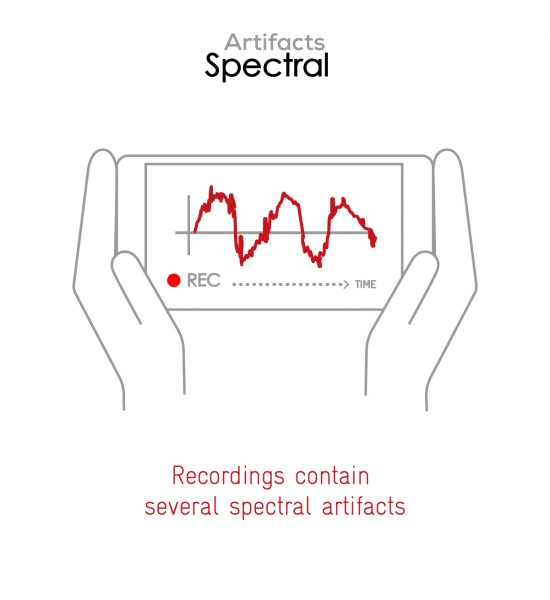

In this audio comparison, you can listen to the way this smartphone handles wind noise relative to its competitors:

Background
Samsung Galaxy Z Flip4
166
Background evaluates how natural the various sounds around a voice blend into the video recording file. For example, when recording a speech at an event, the background should not interfere with the main voice, yet it should provide some context of the surroundings.
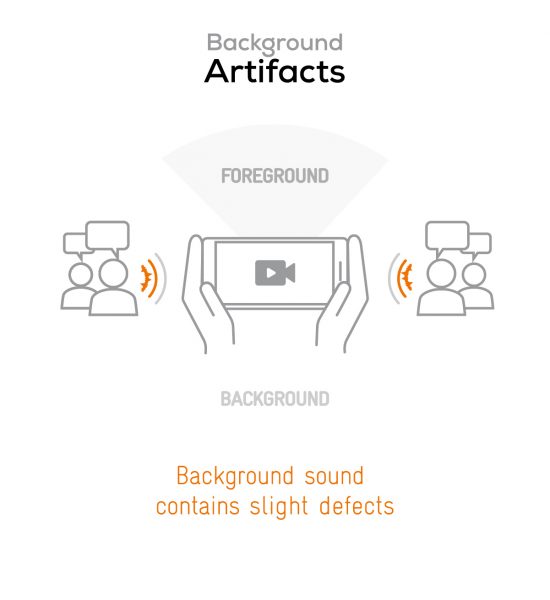



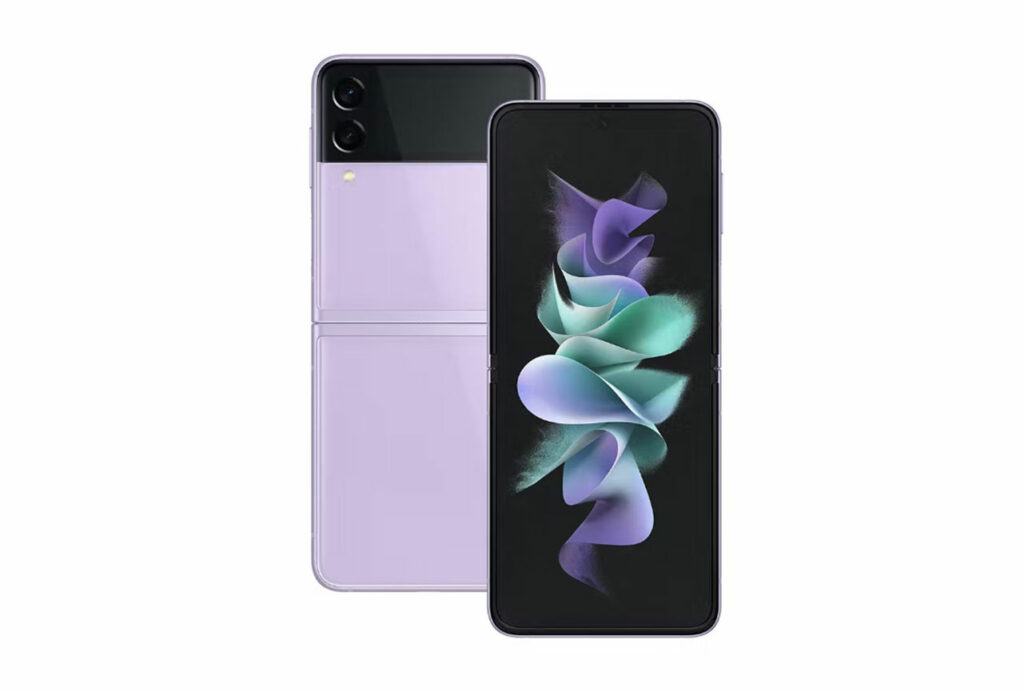
DXOMARK encourages its readers to share comments on the articles. To read or post comments, Disqus cookies are required. Change your Cookies Preferences and read more about our Comment Policy.